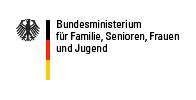Same-sex lifestyles in the school
Education without disadvantages: same-sex lifestyles in the school
Same-sex lifestyles are very often not talked about in German schools, which effectively renders them taboo subjects. This encourages exclusion and discrimination, and even violence against girls and women and boys and men who do not conform to the heterosexual norm. Calling someone a “fag” or a “poof” is a common insult in schoolyards. Different lifestyles must be actively addressed in schools if the educational goals are to include tolerance and equal treatment. Gender Mainstreaming in the school means appropriately implementing this educational goal.
Treating same-sex lifestyles as taboo in school leads to problems on many levels.
Treating same-sex lifestyles as taboo in school leads to problems on many levels.
- Firstly, it affects children and young people who are growing up lesbian, gay or bisexual. Their exclusion is tolerated. If they are open about their sexual identity, they are made into laughing-stocks by their fellow students and bullied. Young people are then on their own with their questions and problems. In higher grades, it is estimated that there are 1 to 2 young people in every grade with a non-heterosexual orientation. They are particularly affected in the difficult phase of “coming out” which is when they become aware that their feelings are not heterosexual, which usually happens between the ages of 12 and 17.
- Treating same-sex lifestyles as taboo also means for children and young people that they do not become acquainted with the diversity of life in today’s society and possibly even accept discriminatory behavior as normal. Without active explanation of different lifestyles, children and young people do not learn to go out into the world with compassion for difference. This means that an important part of the state’s duty to educate them has not been fulfilled. This is especially disturbing when studies show that homophobic violence (attacks on actual or presumed gays or lesbians) outside school is frequently perpetrated by boys of school age.
- Finally, treating same-sex lifestyles as taboo in school puts a considerable strain on teachers who are themselves homosexual or bisexual. The pressure to conceal their own lives results in negative psycho-social consequences and impairs their performance as well as the quality of their lives.
- The school’s job within the framework of the duty to educate can be defined expressly with regard to Gender Mainstreaming: the aims are the individual development of the personality, respect for others and non-violence in dealing with and solving conflicts, in other words, communication of the basic values of the Constitution. School must therefore take a clear position against discrimination and lack of tolerance. (There are suitable pedagogic approaches for this.)
- Curricula can be designed to take proper account of gender and with an orientation to gender equality. This means, for example, not just treating the topic of sexual orientation as part of biology and social studies teaching as a “problem” that “others” have, but integrating issues dealing with different lifestyles into a wide range of subjects – in talking about literature, the selection of examples in all subjects and the communication of basic social skills.
- The inclusion in classes of gay and lesbian projects which focus in a differentiated way on questions and needs of young people and thus provide information while at the same time fostering acceptance has proved to be very useful. One example is the youth network Lambda [external, German].
- Teachers can in further training courses gain personal and didactic skills in dealing with discrimination and difference and thus also with gender and sexual orientation. Several possibilities for this are on offer in Germany, which have been developed using gay and lesbian pedagogic skills.
- Teachers can only fulfill their roles as confidantes for young people if they themselves live in a working climate dominated by trust and acceptance. For historical reasons, many gays and lesbians are afraid of exclusion. Experience shows that this climate is considerable improved if teachers are not forced to conceal their own lifestyles. A supportive campaign by the responsible authorities can give an important lead here and thus help to break down the taboo.
- Peer acceptance is crucial for the situation and chances for development of young people. School is the place where they meet with their peers. If it creates a climate of acceptance at the symbolic level, then much has been gained. Examples are events, well-placed posters, films or theater on the subject of the diversity of lifestyles.
- Political leaders can contribute to promoting a climate of acceptance and tolerance in schools by creating and multiplying awareness in committees like the state school board and among the public.
Sources and further reading:
- Senatsverwaltung für Inneres (Hg.): Endbericht der Unabhängigen Kommission zur Verhinderung und Bekämpfung von Gewalt in Berlin, Berlin 1994, S. 117.
- Senatsverwaltung für Schule, Jugend und Sport Berlin, Fachbereich für gleichgeschlechtliche Lebensweisen (Hg.): Sie liebt sie. Er liebt ihn. Eine Studie zur psychosozialen Situation junger Lesben, Schwuler und Bisexueller in Berlin, Berlin 2001.
- Niedersächsisches Ministerium für Frauen, Arbeit und Soziales: Zur Lebenssituation, sozialen und sexuellen Identität schwuler Jugendlicher, Hannover 2001.
erstellt von Administrator
—
zuletzt verändert:
02.01.2010 20:08





